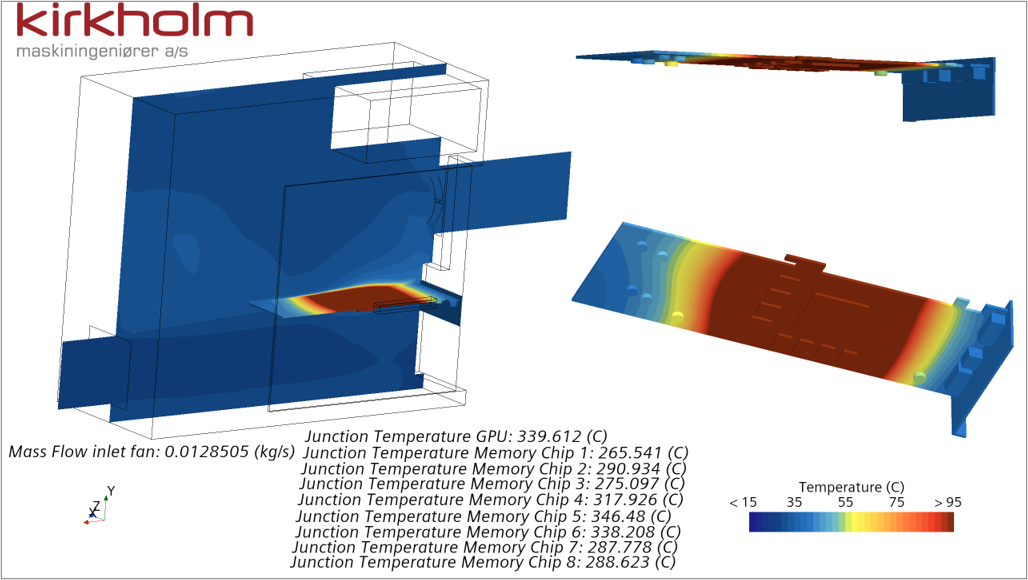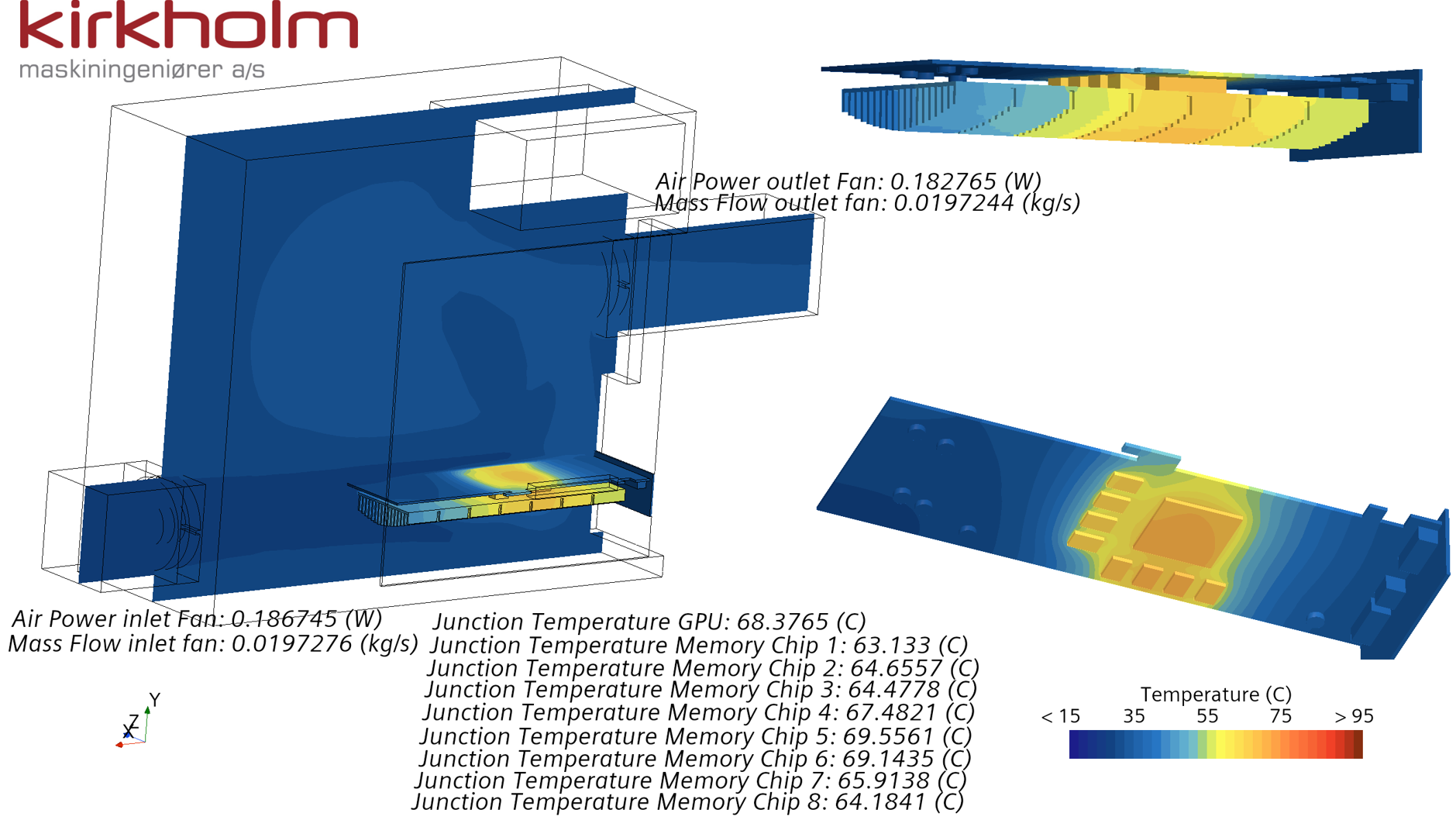Jacob Mac Rygaard | CTO
CFD & Fluid Mechanics
Phone: +45 60 40 48 81
Email: jmr@kirkholm.dk
Thermal management is a crucial aspect of electronics design, as excessive heat can cause permanent damage to components and degrade system performance.
To ensure that the design is at its best, Computational Fluid Dynamics (CFD) simulations can be used to optimize cooling solutions for electronic systems.
In this case study, we will investigate how CFD simulations (Computational Fluid Dynamics) can improve electronics cooling for a simplified case study of a cabinet with one PCB (Printed Circuit Board).
What is the issue at hand?
The PCB contains 1 GPU and 8 memory chips. They all produce heat and have a maximum allowable junction temperature of 70°C. The junction temperature is the highest temperature in the chip. To remove some of the heat, a fan is installed at the cabinet inlet.
We might have a gut feeling, that this single fan is not good enough. But how bad is it? And what is needed to achieve the required temperature?
How do we solve it?
To evaluate the temperatures and improve the cooling, we used CFD simulations to simulate different scenarios that could have a positive impact. This process involved the following steps:

Iterations
The initial simulation with one fan as the single cooling solution, showed a junction temperature of more than 300°C, which is way above the allowable limit as seen on the above picture.
To lower the temperature of 300°C, we added a heat sink to the PCB, which reduced the temperature to around 90°C. As this temperature was still too high, the next iteration added a fan at the outlet as well, which brought the temperature down to below 80°C, and close to the limit.
In the final iteration and attempt to go below 70°C, the PCB was placed in the jet from the inlet fan. This resulted in a junction temperature of 69°C and finally, we had reached an acceptable temperature level inside the cabinet, as seen on the below picture.

What did we learn?
The CFD simulations showed us that adding a heat sink and a fan at the outlet helped reduce the temperature, but it was not enough to keep the temperature below the allowable limit. Only by using a fan at both the inlet and outlet combined with an optimized PCB position, it was possible to lower the junction temperature to an acceptable level.
This simplified case study highlights the importance of using CFD simulations to optimize thermal management solutions for electronics. It also shows the iterative process involved in finding the most effective solution, that allows the designer to validate the efficiency of their product.
Do you find CFD simulations interesting, you can read more about Computational Fluid Dynamics here and if you are interesting in exploring the possible value of CFD within your company, then don't hesitate to reach out to our CTO Jacob:

Jacob Mac Rygaard | CTO
CFD & Fluid Mechanics
Phone: +45 60 40 48 81
Email: jmr@kirkholm.dk
We can help you with practical information and answer your questions - give us a call or write to us.
All Rights Reserved | Kirkholm